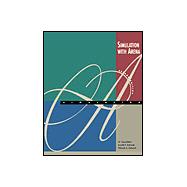The new edition follows in the tradition of the successful first edition in its tutorial style (via a sequence of carefully crafted examples) and an accessible writing style. The updates include thorough coverage of the new version of the Arena software (Arena 4.0), a revised statistical-analysis material, and additional exercises and examples.
The CD-ROM that accompanies the book contains the Academic version of the Arena software, which features a completely new reporting environment!








